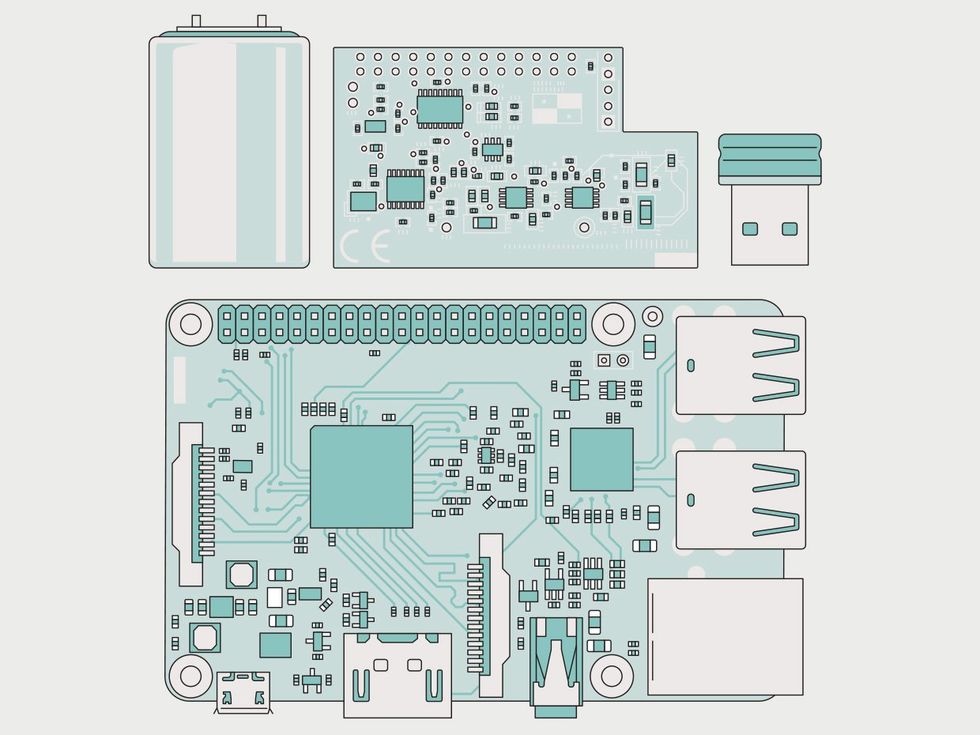[ad_1]
I’ve solely as soon as felt an earthquake—in 1985, when a magnitude-4 temblor occurred simply north of New York Metropolis. It wasn’t till I heard the information experiences later that I noticed the vibration that had woke up me at 6 a.m. was, in reality, a small earthquake.
Many earthquakes have since vibrated the bottom beneath my ft. It’s simply that these vibrations, having traveled lengthy distances by the Earth, have (fortunately) been too small to really feel. If I had a suitably delicate seismometer, although, I’d be capable of measure them.
I not too long ago determined that I wanted to offer this a strive. Looking the interwebs, I discovered no scarcity of leads about the best way to construct a DIY seismometer. Essentially, these include a magnet connected to a mass, with a close-by pickup coil. The mass is suspended in order that it stays largely immobile when the bottom shakes. The shaking does vibrate the coil, nevertheless, inducing a voltage in it as a consequence of its relative movement by the magnet’s magnetic discipline. The issue is that the DIY seismometer designs I used to be seeing had been giant and ungainly contraptions. I puzzled whether or not I may construct a extra compact one utilizing a geophone.
Geophones are generally used within the oil and fuel business for seismic surveying, the place the seismic waves are artificially generated to probe the bottom under. On land, particular vehicles—known as “thumpers” —do the job. The seismic waves they produce replicate again up from layers of rock and are sensed utilizing geophones.
A search of eBay confirmed that geophones could possibly be had inexpensively. The rub, I quickly realized, is that geophones aren’t designed to choose up the low frequencies present in teleseismic waves from distant earthquakes. These vary from about one cycle per second (1 hertz) all the way down to a fraction of a cycle per second. Most geophones are designed for measuring frequencies above 10 Hz. The bottom-frequency fashions typically accessible are for 4.5 Hz.
Additional investigation, although, revealed that some intelligent digital sign conditioning may lengthen the vary of a geophone to decrease frequencies. I used to be all set to pursue this technique after I found that any person had beat me to it. Really, an entire neighborhood of (largely) beginner seismologists had, utilizing a Raspberry Pi–based mostly machine known as a Raspberry Shake, developed in 2016 by a gaggle in tectonically energetic Panama. The Raspberry Shake effort has grown to incorporate customers worldwide who share seismic information. Even some skilled seismologists use Raspberry Shakes as a result of they’re cheap as seismometers go.
 The required electronics include a geophone [top left], a signal-conditioning and A/D board [top middle], a Wi-Fi dongle [top right], and a Raspberry Pi Mannequin 3B+ [bottom]. James Provost
The required electronics include a geophone [top left], a signal-conditioning and A/D board [top middle], a Wi-Fi dongle [top right], and a Raspberry Pi Mannequin 3B+ [bottom]. James Provost
The Raspberry Shake people provide quite a lot of configurations. I bought the most bare-bones package deal for about US $175. This consists of a geophone and a sensor board that plugs right into a Raspberry Pi. I used a Raspberry Pi Mannequin 3B+.
I housed the unit in a waterproof enclosure, wherein I had put in one bulkhead connector for 5-volt energy and a second one for USB, so I may plug in a Wi-Fi dongle that was bodily separated from the Raspberry Pi. (The Raspberry Shake folks suggested not utilizing the Mannequin 3B+’s built-in Wi-Fi, which apparently causes information glitches.)
Establishing my Raspberry Shake, like most Raspberry Pi initiatives, concerned a number of magic incantations to the Linux gods. On this case, there have been actually simply two challenges. The primary was to get an SD card ready with the working system and the Raspberry Shake software program. For me the first method described within the set up documentation flopped, however the different system supplied labored simply tremendous.
The second problem was getting a Wi-Fi dongle arrange. The primary one I bought, mentioned to be appropriate for Linux, proved a bust. However an older dongle I had available labored. Cautious of Wi-Fi points, I first examined my Raspberry Shake in my lounge, wired on to my router. The Raspberry Shake is designed for use in a so-called headless configuration, which eliminates the necessity for a show: You’ll be able to connect with it remotely utilizing SSH or through a nifty Internet interface. So very quickly I used to be capable of see information the Raspberry Shake was recording.
Letting it report the shaking brought on by folks strolling round my home revealed mysterious information gaps. Investigating the trigger, I found that the issue was the facility adapter I used to be utilizing, which couldn’t ship sufficient present. As soon as I changed it, the information outages disappeared.
At this level, I put in the unit on the cement-slab ground of my residence’s indifferent storage, figuring that this location could be freed from indicators brought on by anybody strolling round the home. Then I left it to collect information till an earthquake was reported someplace on the planet sufficiently giant to presumably be detectable.
On 29 August, there was a magnitude-5.5 earthquake in, fittingly, Panama, birthplace of the Raspberry Shake. I consulted a Internet web page that reveals a seismic station close to my residence in North Carolina. This revealed that faint indicators from this earthquake had reached my space.
 The Raspberry Shake’s Internet interface makes it simple to view recorded information, offered in what seismologists name helicorder format. This portion of the information for six September 2023 contains the time at which teleseismic waves from a moderate-size earthquake in Chile would have reached the recording web site, at about 23:59 UTC, which is proven on the 14-minute mark within the inexperienced hint [bottom]. No apparent earthquake sign is seen at that time, although.James Provost
The Raspberry Shake’s Internet interface makes it simple to view recorded information, offered in what seismologists name helicorder format. This portion of the information for six September 2023 contains the time at which teleseismic waves from a moderate-size earthquake in Chile would have reached the recording web site, at about 23:59 UTC, which is proven on the 14-minute mark within the inexperienced hint [bottom]. No apparent earthquake sign is seen at that time, although.James Provost
After I appeared on the information recorded by my Raspberry Shake, although, it confirmed no matching sign. I used to be disenchanted however not significantly stunned: Magnitude 5.5 is a reasonably wimpy earthquake, in spite of everything, and it befell virtually 3,000 kilometers away.
I investigated what another Internet-connected Raspberry Shakes had recorded throughout that earthquake. The farthest one from Panama that registered an excellent sign was in Puerto Rico. The seismic waves from the Panama earthquake had been apparently too small to register on Raspberry Shakes within the continental United States.
Since that point, a bigger (magnitude 6.2) quake befell in Chile. The earthquake-magnitude scale is logarithmic, so this was 5 instances the scale of the magnitude-5.5 Panama quake. However it was a lot farther (about 7,400 km) away. And my Raspberry Shake didn’t register waves from it both.
So I’m nonetheless ready for a giant one. And I’m grateful that, from my East Coast location, I’ll solely be seeing it as indicators on my storage seismometer, slightly than as a bunch of rubble on the street.
From Your Web site Articles
Associated Articles Across the Internet
[ad_2]


